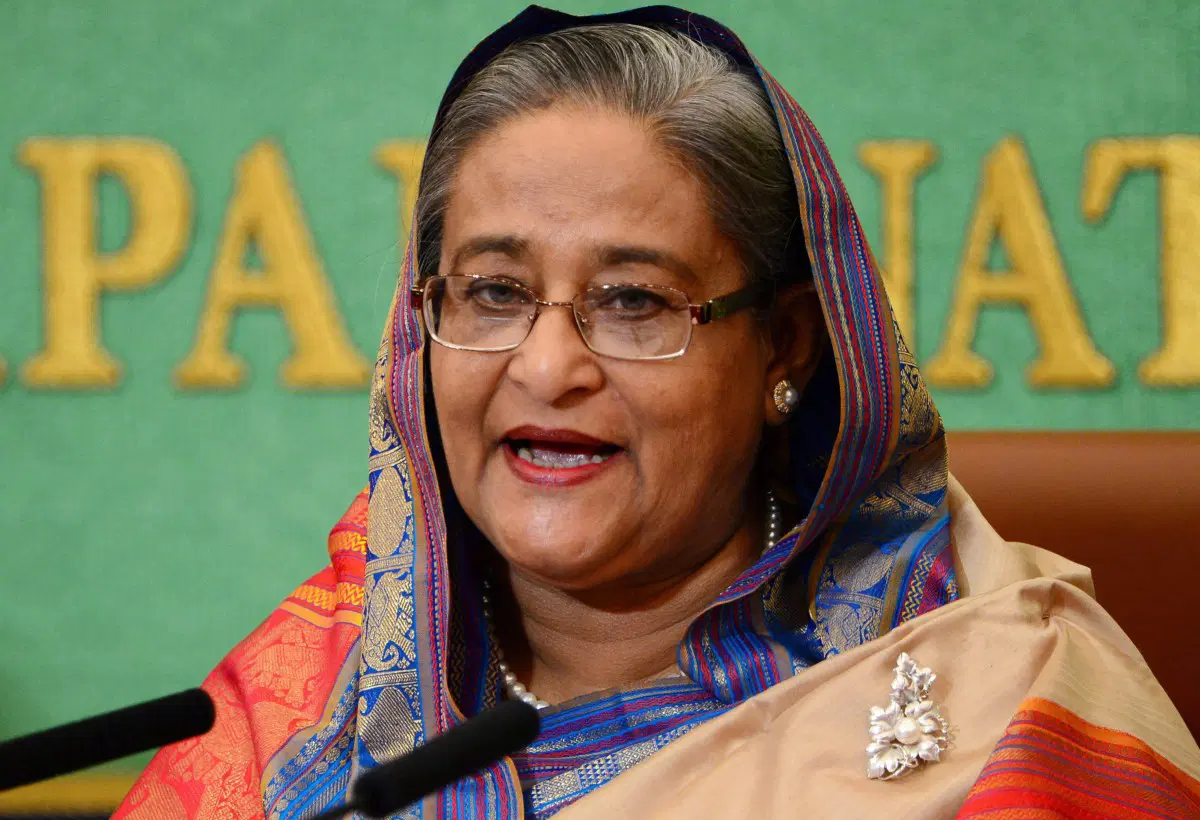Foreign
Bangladesh PM Sheikh Hasina Flees Amid Deadly Protests

Bangladeshi Prime Minister Sheikh Hasina fled the country on Monday following a month of intense anti-government protests that culminated in a deadly day of violence, according to a source close to the leader. Hasina, who has been in power since 2009, departed after nearly 100 people were killed in clashes on Sunday.
The 76-year-old Prime Minister initially left by motorcade but was later evacuated by helicopter, as protesters stormed her palace in Dhaka. The source, speaking to AFP, revealed, “Her security team advised her to leave quickly, and she had no time to prepare. She was eventually flown out by helicopter.”
On Monday morning, jubilant crowds celebrating the unrest were seen waving flags and dancing on top of a tank. Hundreds breached the gates of Hasina’s official residence, with Channel 24 broadcasting images of people streaming into the compound and vandalizing statues of Hasina’s father, Sheikh Mujibur Rahman, a national hero.
Bangladesh’s army chief, Waker-Uz-Zaman, was expected to address the nation later on Monday, though details were not provided. Before the storming of the palace, Hasina’s son, Sajeeb Wazed Joy, who is based in the US, urged security forces to prevent any takeover. “Your duty is to keep our people and our country safe and to uphold the constitution,” Joy stated on Facebook. “Do not allow any unelected government to come to power, even for a minute.”
Despite curfews and deadly force, protesters continued to clash with government supporters using sticks and knives. Security forces opened fire, resulting in at least 94 deaths on Sunday alone, including 14 police officers. This brought the total death toll since the unrest began in early July to at least 300, according to an AFP tally.
The military had previously supported Hasina’s government throughout the protests, which began over job quota disputes and expanded to broader demands for her resignation. On Monday, troops and police in Dhaka used barbed wire to barricade routes to Hasina’s office, but protesters overwhelmed the barriers, with an estimated 400,000 people flooding the streets, though this figure could not be independently verified.
Asif Mahmud, a key leader in the civil disobedience campaign, declared, “The time has come for the final protest.” Unlike previous rallies, security forces largely refrained from intervening on Sunday.
Michael Kugelman, director of the South Asia Institute at the Wilson Center, commented, “The walls are closing in on Hasina: She’s rapidly losing support and legitimacy.” He noted that the protests were fueled by widespread anger and a sense of national backing.
In a symbolic critique of Hasina’s administration, former army chief General Ikbal Karim Bhuiyan called for the immediate withdrawal of troops and an end to the crackdown on protests. “Those responsible for pushing people to such extreme misery must be brought to justice,” Bhuiyan said.
The anti-government movement has drawn participants from various sectors of Bangladeshi society, including celebrities and artists.
Kindly contact us @ info[@]wordspired.com.ng
Call or Whatsapp: +234 803 951 2443, +234 902 474 4290
-

 News5 years ago
News5 years agoOmar Bolaji Gambari: The new Mr. Fix It in Aso Rock?
-

 News5 years ago
News5 years agoYou are in trouble, Shekau threatens Chadian President Idris Deby
-

 News5 years ago
News5 years agoMaryam Onikijipa-Belgore: Living an Impactful Life for the Downtrodden
-

 Entertainment4 years ago
Entertainment4 years agoAfro fusion act TYMZY set to excite music fans with debut collection
-

 Entertainment5 years ago
Entertainment5 years agoSaidi Balogun’s latest movie White/Funfun hits the market, making waves on YouTube
-

 News5 years ago
News5 years agoDutch top football league may be cancelled
-

 News5 years ago
News5 years ago“Ego is the major problem affecting Yoruba race” – Oba Frederick Akinruntan
-

 Entertainment5 years ago
Entertainment5 years agoFunke Akindele, JJC Skillz sentenced to 14-day community service










